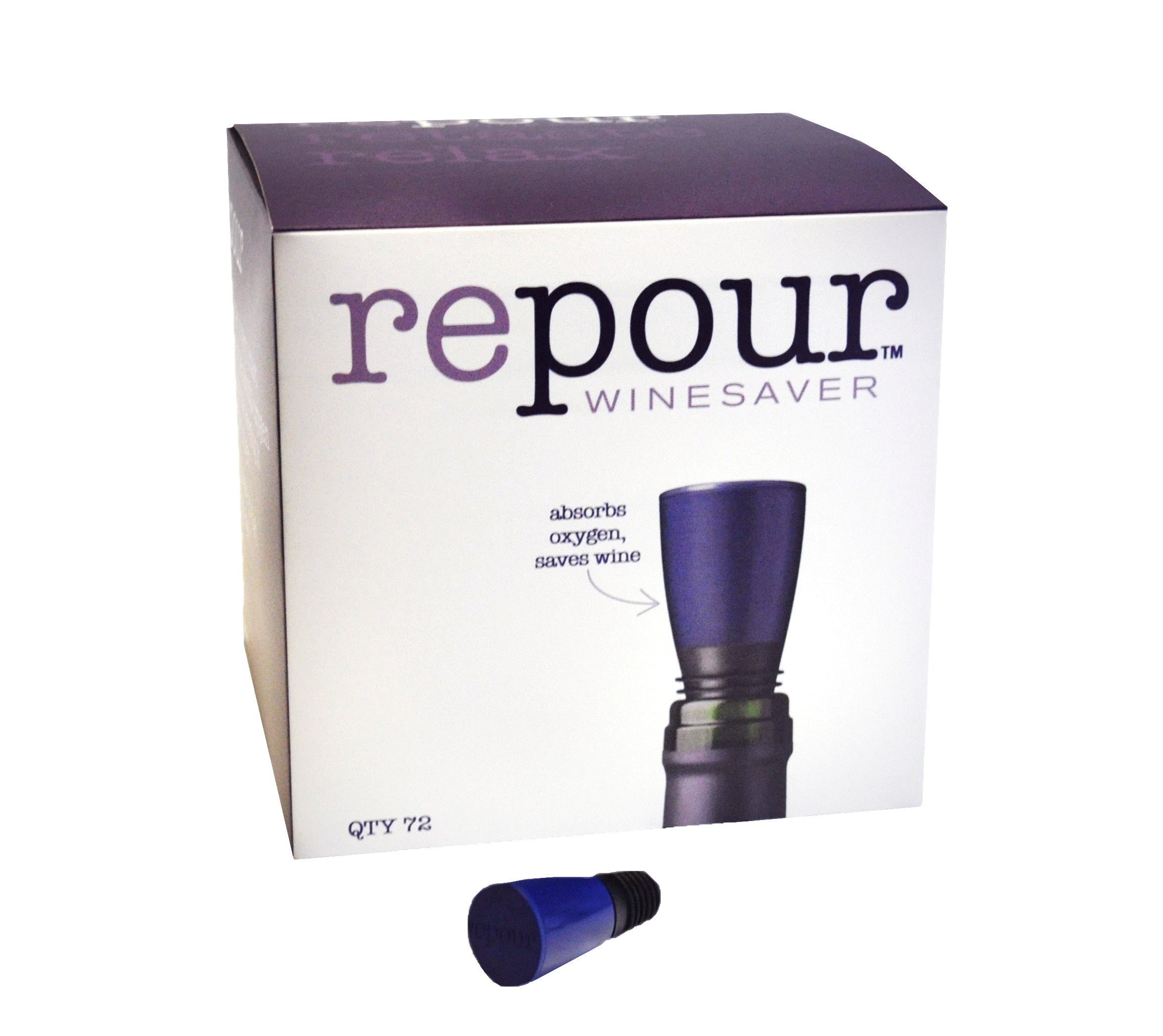Repour is designed around a standard 750 ml bottle of wine under the assumption of 5 pours and around its ability to absorb the oxygen from 1500 ml of air:
1 glass gone = 150 ml
2 glass gone = 300 ml
3 glass gone = 450 ml
4 glass gone = 600 ml
5 glass gone = empty
-----------------------------------
Total = 1500 ml of air
If Repour is exposed to a higher volume of air than 1500 ml, its effectiveness will be diminished and possibly not effective.
The science can be summarized in three scientific principles:
-
An Oxidation Reaction: The science behind oxygen disappearing is an oxidation reaction between oxygen and another material. This is a non-reversible chemical reaction which is what makes Repour so effective—and also why one stopper only works on 1 bottle of wine (1500 ml of air). The reaction looks like this: X + O2 -- > XO2 There are no by-products of this reaction, so the oxygen is removed from the bottle and not replaced with anything. As there is 21% oxygen in the air, this means that a 21% vacuum is created (another chemistry principle called Dalton's Law). You will notice this when you open the bottle. If you do so in a quiet room and listen carefully, you will hear (and sometimes feel) this 21% vacuum break.
-
Principles of Diffusion: The second part of Repour's effectiveness relies on the principles of diffusion. The oxidation reaction is only effective because diffusion of oxygen in the air above the wine "brings" oxygen into the stopper and allows the oxidation reaction to consume it. If you were to open a stopper, you would find a packet (or sachet) inside of it. This is special material that allows air to pass but NOT liquids or fine materials that are inside the sachet that react with Oxygen. Diffusion allows oxygen to pass thru this material.
-
Henry's Law: People look at me funny when I say this, but ultimately we don't really care about how much oxygen is in the air; we care about how much oxygen is actually in the wine (i.e. were oxidative damage is actually occurring). In essence, oxygen is always "dissolving" into and back out of the wine. There is an equilibrium that occurs and based on the amount of oxygen in the air. As Repour continuously removes oxygen from the air, it in turn removes all of the oxygen from the wine itself.
This is really the magic behind Repour's effectiveness. Here's a nice explanation of Henry's law: https://en.wikipedia.org/wiki/Henry%27s_law
In summary, Repour's effectiveness and science is a three-part process. Oxygen reacts with a material via a non-reversible chemical reaction tailored to oxygen molecules. Diffusion continuously brings oxygen to the site of the reaction, which in combination with Henry's law brings the dissolved oxygen in the wine down from approximately 8 ppm (which is what an average wine would be once exposed to air) to less than 0.03 ppm. By continuously and actively reacting with Oxygen in a closed space, the stopper will continue to remove all the oxygen in the bottle until there is no oxygen left.









